Chances are you're interested in photography and videography, or at least viewing them, if you're reading this wee blog. I am, and I think it is a huge part of our outdoor adventures to photograph and increasingly make videos of them. Some do so for themselves, others to share with their friends and family, a few do so to showcase them on their blogs and websites, and a very small group even earns money with them [those lucky bastards =].
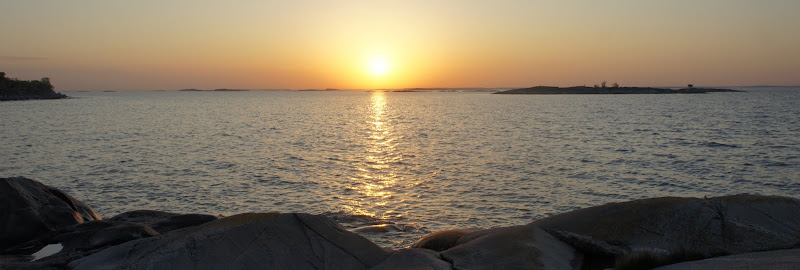
In recent years the technology in cameras has made some astonishing developments - HD video isquickly becoming the norm, making a normal photo camera also a very potent videocamera (and in the case of cameras with interchangeable lenses, even superior). At the same time the size of those cameras has decreased - where a few years ago still we were carrying bulky DSLRs through the outdoors to capture our adventures, the same or better results can be nowadays achieved with cameras a fraction of the size and weight. Even better for those who want to carry as little weight as possible, smartphones like the Nokia N9 and the Apple iPhone 4S rival DSLRs a few years old in terms of quality and capabilities, even offering HD video capabilities in a package which fits in your pants' pocket.
But smaller and lighter isn't everything when it comes to developments in the photography realm, especially if you're taking photography more serious than point-and-shoot. During the last few months I found a number of very interesting concepts, which I'd like to share with you, as I think they open up truly new ways to capture photos and videos; and as questions about which cameras I use are regularly asked, I will also delve into that topic and try to answer them.
The Lytro camera
Have you ever took a photo, came home and uploaded your photos to your compter just to find out that those photos you really wanted to have sharp and focused were a blurry mess? With the Lytro camera such problems are a thing of the past.

Source
The Lytro captures the light field. That means the Lytro light field sensor captures the color, intensity and vector direction of the rays of light - stuff even your $7000 Leica, Canon or Nikon can't capture. It does this by using smart software, which increases the speed of taking a photo and capturing better pictures in low light - who wouldn't want to be able to take a great dawn or dusk shot without needing to fuss around with Aperture, Shutter speed and ISO settings? I thought so.
I guess the most obvious advantage is the wonderful possibility to let others focus your photos, and create nice effects with unsharp and blurry back- and foregrounds. This opens up a new way of interaction with the people who come to view your photos. Best you head over to the Lytro Gallery and play around with a few photos to see what I mean. I will wait here.
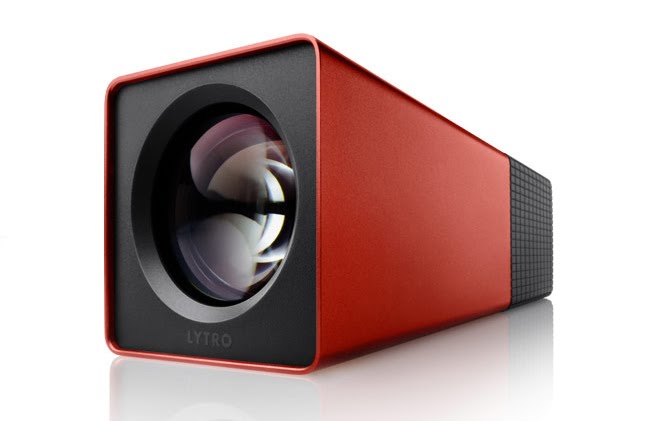
Source
The Lytro has an On/ Off switch, a shutter button, a small screen in the back and a USB port. Weighing in at a claimed 214 gram, it is even nice and light! You can choose to get a 8 GB or 16 GB model, $400 and $500 respectively - though at the moment they're sadly only available in the USA. Who knows, hopefully they will be available worldwide soon; and Lytro is looking into bringing the same technology to video, which should be cool.
The Digimo Camera
The Digimo Camera is only a concept at the moment, so you can't just yet head out to buy one. But the idea is so fresh that'd like to pass it by you:
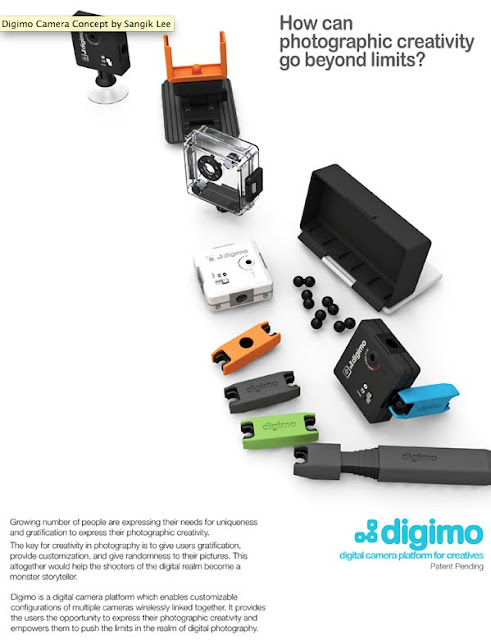
The Digimo Camera Concept consists of a modular set of multiple cameras which can be placed in any position and are controlled with a wireless controller/ screen. The above concept shot remembers me a bit of my GoPro HERO2 Camera with the case, the slim, small camera body, the LCD screen
with the case, the slim, small camera body, the LCD screen and the possibility of wirelessly connecting to the camera to take photos.
and the possibility of wirelessly connecting to the camera to take photos.
And while you can hook up up to 50 GoPro HERO2 cameras to the new Wi-Fi bac coming out soon, this concept seems to come out-of-the-box with a couple of their slim cameras. If this ever makes it into a tangible product, I certainly will look into it, especially if it is more affordable than several GoPros. Because the possibility to capture natural stills and video from different angles at the same time is something that allows for new, creative movies and photos.

Smartphones with cameras
Smartphones like the Nokia N9, Apple iPhone 4S and several others have cameras on board which make older DSLRs blush with envy. Sure, you can't swap out lenses, they still mostly suck at high resolution dusk/ night/ dawn photos, but for nearly everything else they really rock, especially if you want to carry as little weight as possible and have items which do more than one thing (so your smartphone can take photos/ HD video, has a GPS, shows you where you're on the map, lets you tweet, email and call - which of your other items has as many functions?). Don't believe me? Then check out Colin Ibbotson's Colorado Trail photos, which were all shot and edited on an iPhone 4.
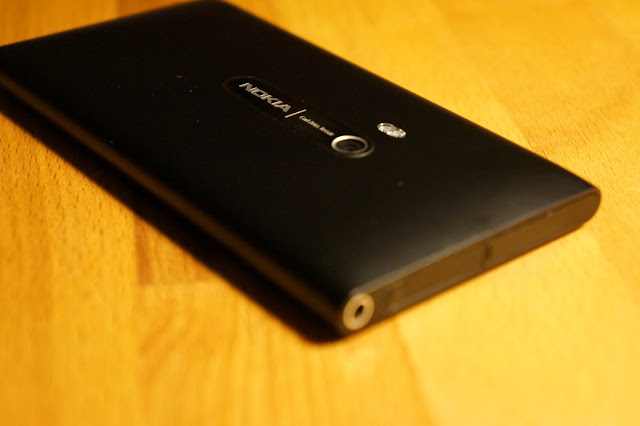

So if multipurpose and little weight are of utmost concern to you, and you don't mind to not to be able to photograph the night sky, then you probably shouldn't look further than a smartphone with a good camera. The smartphone with the arguably best camera, spec-wise, is the Nokia N8 (it otherwise is rubbish in my opinion, and the N9 or Lumia phones, if it should be a Nokia, are probably a better investment), though iPhone and Android users also get some spectacular results out of their camera phones.
POV cameras
The latest buzz and trend are POV (Point Of View) cameras from companies like GoPro, Contour, and Vio. These are small cameras with HD capability, and easily attach to your helmet, can be worn strapped to your chest or on your kayak/ surfboard/ plane wing/ you name it. I bought a GoPro HERO2 last year and have been experimenting with it since, both on the bike, skiing, as a back-up camera for ULAZ and for Timelapse movies. It is a very novel approach and certainly can add a very unique perspective to your videos/ photos, though again there are limitations - in my experience the camera doesn't deliver satisfying results after dusk, and the weather should be good to get great results - if it is grey and cloudy, the movies often will look dull. Also the wide angle isn't for everyone; some hate it, some love it. It certainly needs to get used to, and to get great results you'll want to spend some time editing the footage to make it representable.
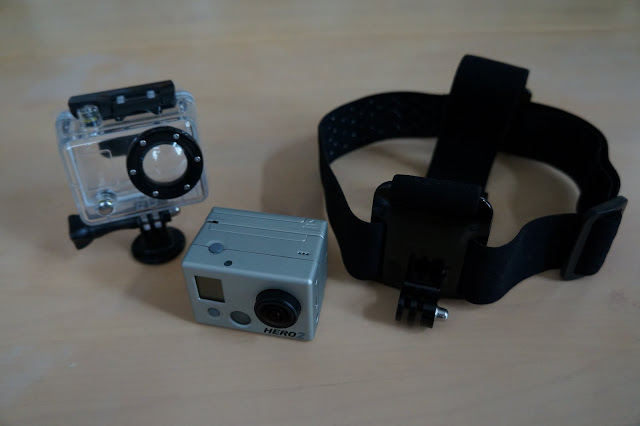
My cameras
Which brings me to my cameras. I'm using a Sony NEX-5N and a Panasonic GH2 at the moment, and use the GH2 with a Rode VideoMic Pro for superior audio output - something which is as important in video as visuals (unless you put some music over it). I rate the NEX-5N very high, it shoots wonderful photos and videos and is so light and compact that it is the camera I grab if I go out skiing at the moment and want to shoot some photos along the way. If you want a Prosumer camera which is light, compact and can deliver stunning images and videos, then you probably shouldn't look further than the Sony NEX-5N. I just love how easy it is to use, and the images is makes are superb.

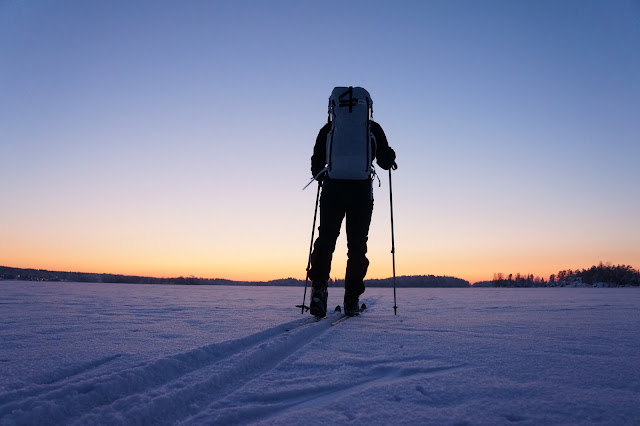
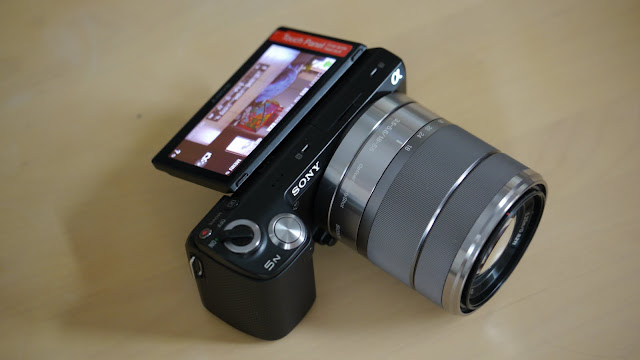
The Panasonic Lumix GH2 and Rode VideoMic Pro are my dedicated ULAZ setup. As I produce the series on my own, I need to see if footage is sharp, and the GH2's swivel screen is just perfect for that. Paired with the 20 mm Pancake lens and the 45 mm Leica it is a dream team, and I am happy that I can use this great equipment for production as it makes the quality, and my life, a lot better. The GH2 also does a superb job at taking photos, don't worry. The swivel screen again comes in very handy if you want to shoot close to the floor or above your head, though its EVF is very good and you'll be happy to have it when it is bright and sunny outside. There's a bunch of more features on this camera, and the 14 - 140 mm kit lens is a great standard lens to carry along, as it allows me to be prepared for different situations.

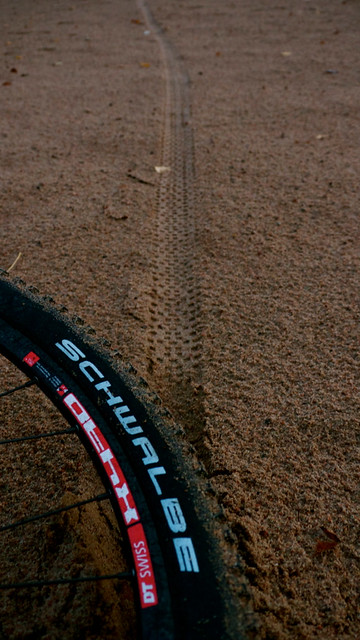
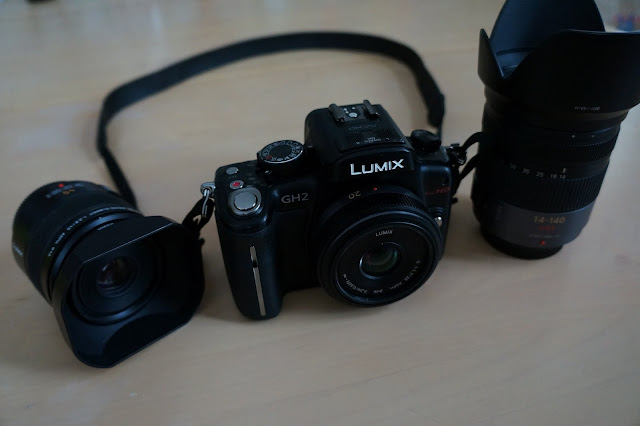
While the GH2 has a good mic, I decided to get the Røde VideoMic Pro because it allows me to shoot even if it is windy - which in Tampere it is pretty much always. With the Deadcat on the mic I can film where otherwise I would be forced to retire and wait for better weather, and the audio output is so much superior to earlier videos in which I didn't use it. And it is dead-easy to use - plug in, switch on, ready. So my recommendation is that if you make videos in which audio - be it natural sounds from a running river, birdsongs or the wind in the trees; or you talking to the camera - are is an integral part of the video, that you dish out the extra money for a decent mic. You yourself, and your audience, will be a lot happier.
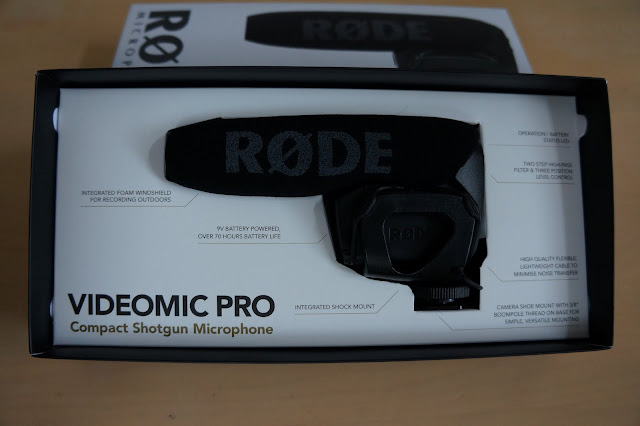
So how do I use this setup? The GH2 + Rode VideoMic Pro are my main setup - they go on my tripod, swivel screen facing me when I'm in front of the camera, or using the EVF if I shot gear and stuff. I switch between all three lenses depending on need - 20 mm Pancake for a wide view, for example for full body shots, pitching a tarp/ shelter, and so on. The 45 mm Portrait lens for close-ups of gear/ me talking to the camera, and the 14 - 140 mm lens for everything else (landscape shots, close ups, etc.). In case you're wondering why not use the 14 - 140 mm for everything - it after all covers the 20 mm and 45 mm range - then the answer is that the f/ stops of the other two lenses are lower, which I often need. I also feel that these two dedicated lenses have a bit better optics, but that might just a subjective feeling instead of an objective fact (well, in case of the Leica 45 mm lens, it is a fact =).
The NEX-5N is my close-up/ behind-the-scenes/ back-up camera, and usually stands on my GorillaPod and shoots to offer a different view at scenes. It is more mobile camera I often shot handheld "flying" scenes with it. And as I said, if I go for a training skiing trip it is often my camera of choice to take.
The HERO2 is another behind-the-scenes/ back-up camera, and either stands on a GorillaPod somewhere overlooking everything, or gets used to create POV footage. Besides the above linked timelapse I have yet to publish some of that footage, so if you're interested, subscribe to me on Vimeo (useful also for all other videos =).
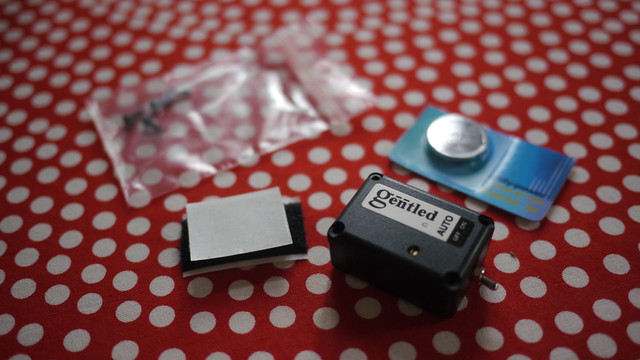
All three cameras also allow me to shoot timelapse. For the Sony NEX-5N I'm using a gentLED trigger, while the HERO2 has an integrated timelapse mode, which works fairly well. The GH2 can shoot "video timelapse" which means it has a video setting which lets you record at a faster speed. I'm dabbling in this, and hope to take this medium a bit further soon.
This is far from perfect, and just my approach to videography/ photography and some interesting developments in the scene; and doesn't even touch on awesome camera gear like the sweet Dynamic Perception Dolly which I want, or the Cam Caddie I bought last week. If you ask two other people you'll likely get three different opinions, and everyone will recommend you what they think is best (likely because they own it). I recommend you evaluate what you need, read different reviews, and make a purchase decision based on that. In case you end up agreeing with me, I appreciate if you buy via the following affiliate links and banner, then I'd earn a few Euros.
- Sony NEX-5N kit with 18 - 55 mm lens
- Sony 16 mm Pancake lens
- Sony 18 - 200 mm Telezoom lens
- Panasonic Lumix GH2 kit with 14 - 140 mm lens
- Panasonic 20 mm Pancake lens
- Panasonic 45 mm Portrait lens
- Rode VideoMic Pro with Rode Deadcat VMP Furry Wind Cover kit
- Velbon Sherpa 600 Tripod
- Giottos MT8250 Carbon Fiber 4-Section Tripod
- Joby GorillaPod SLR

I wanted to answer the question "Do we try to re-create photos we have seen before?" but seeing that this is already a rather long post, I will save it for the future. As always, if you have questions, comments or observations, please leave a comment.
Disclaiming the Disclaimer
In recent years the technology in cameras has made some astonishing developments - HD video is
But smaller and lighter isn't everything when it comes to developments in the photography realm, especially if you're taking photography more serious than point-and-shoot. During the last few months I found a number of very interesting concepts, which I'd like to share with you, as I think they open up truly new ways to capture photos and videos; and as questions about which cameras I use are regularly asked, I will also delve into that topic and try to answer them.
The Lytro camera
Have you ever took a photo, came home and uploaded your photos to your compter just to find out that those photos you really wanted to have sharp and focused were a blurry mess? With the Lytro camera such problems are a thing of the past.

Source
The Lytro captures the light field. That means the Lytro light field sensor captures the color, intensity and vector direction of the rays of light - stuff even your $7000 Leica, Canon or Nikon can't capture. It does this by using smart software, which increases the speed of taking a photo and capturing better pictures in low light - who wouldn't want to be able to take a great dawn or dusk shot without needing to fuss around with Aperture, Shutter speed and ISO settings? I thought so.
I guess the most obvious advantage is the wonderful possibility to let others focus your photos, and create nice effects with unsharp and blurry back- and foregrounds. This opens up a new way of interaction with the people who come to view your photos. Best you head over to the Lytro Gallery and play around with a few photos to see what I mean. I will wait here.

Source
The Lytro has an On/ Off switch, a shutter button, a small screen in the back and a USB port. Weighing in at a claimed 214 gram, it is even nice and light! You can choose to get a 8 GB or 16 GB model, $400 and $500 respectively - though at the moment they're sadly only available in the USA. Who knows, hopefully they will be available worldwide soon; and Lytro is looking into bringing the same technology to video, which should be cool.
The Digimo Camera
The Digimo Camera is only a concept at the moment, so you can't just yet head out to buy one. But the idea is so fresh that'd like to pass it by you:

The Digimo Camera Concept consists of a modular set of multiple cameras which can be placed in any position and are controlled with a wireless controller/ screen. The above concept shot remembers me a bit of my GoPro HERO2 Camera
And while you can hook up up to 50 GoPro HERO2 cameras to the new Wi-Fi bac coming out soon, this concept seems to come out-of-the-box with a couple of their slim cameras. If this ever makes it into a tangible product, I certainly will look into it, especially if it is more affordable than several GoPros. Because the possibility to capture natural stills and video from different angles at the same time is something that allows for new, creative movies and photos.

Smartphones with cameras
Smartphones like the Nokia N9, Apple iPhone 4S and several others have cameras on board which make older DSLRs blush with envy. Sure, you can't swap out lenses, they still mostly suck at high resolution dusk/ night/ dawn photos, but for nearly everything else they really rock, especially if you want to carry as little weight as possible and have items which do more than one thing (so your smartphone can take photos/ HD video, has a GPS, shows you where you're on the map, lets you tweet, email and call - which of your other items has as many functions?). Don't believe me? Then check out Colin Ibbotson's Colorado Trail photos, which were all shot and edited on an iPhone 4.

So if multipurpose and little weight are of utmost concern to you, and you don't mind to not to be able to photograph the night sky, then you probably shouldn't look further than a smartphone with a good camera. The smartphone with the arguably best camera, spec-wise, is the Nokia N8 (it otherwise is rubbish in my opinion, and the N9 or Lumia phones, if it should be a Nokia, are probably a better investment), though iPhone and Android users also get some spectacular results out of their camera phones.
POV cameras
The latest buzz and trend are POV (Point Of View) cameras from companies like GoPro, Contour, and Vio. These are small cameras with HD capability, and easily attach to your helmet, can be worn strapped to your chest or on your kayak/ surfboard/ plane wing/ you name it. I bought a GoPro HERO2 last year and have been experimenting with it since, both on the bike, skiing, as a back-up camera for ULAZ and for Timelapse movies. It is a very novel approach and certainly can add a very unique perspective to your videos/ photos, though again there are limitations - in my experience the camera doesn't deliver satisfying results after dusk, and the weather should be good to get great results - if it is grey and cloudy, the movies often will look dull. Also the wide angle isn't for everyone; some hate it, some love it. It certainly needs to get used to, and to get great results you'll want to spend some time editing the footage to make it representable.
My cameras
Which brings me to my cameras. I'm using a Sony NEX-5N and a Panasonic GH2 at the moment, and use the GH2 with a Rode VideoMic Pro for superior audio output - something which is as important in video as visuals (unless you put some music over it). I rate the NEX-5N very high, it shoots wonderful photos and videos and is so light and compact that it is the camera I grab if I go out skiing at the moment and want to shoot some photos along the way. If you want a Prosumer camera which is light, compact and can deliver stunning images and videos, then you probably shouldn't look further than the Sony NEX-5N. I just love how easy it is to use, and the images is makes are superb.
The Panasonic Lumix GH2 and Rode VideoMic Pro are my dedicated ULAZ setup. As I produce the series on my own, I need to see if footage is sharp, and the GH2's swivel screen is just perfect for that. Paired with the 20 mm Pancake lens and the 45 mm Leica it is a dream team, and I am happy that I can use this great equipment for production as it makes the quality, and my life, a lot better. The GH2 also does a superb job at taking photos, don't worry. The swivel screen again comes in very handy if you want to shoot close to the floor or above your head, though its EVF is very good and you'll be happy to have it when it is bright and sunny outside. There's a bunch of more features on this camera, and the 14 - 140 mm kit lens is a great standard lens to carry along, as it allows me to be prepared for different situations.


While the GH2 has a good mic, I decided to get the Røde VideoMic Pro because it allows me to shoot even if it is windy - which in Tampere it is pretty much always. With the Deadcat on the mic I can film where otherwise I would be forced to retire and wait for better weather, and the audio output is so much superior to earlier videos in which I didn't use it. And it is dead-easy to use - plug in, switch on, ready. So my recommendation is that if you make videos in which audio - be it natural sounds from a running river, birdsongs or the wind in the trees; or you talking to the camera - are is an integral part of the video, that you dish out the extra money for a decent mic. You yourself, and your audience, will be a lot happier.
So how do I use this setup? The GH2 + Rode VideoMic Pro are my main setup - they go on my tripod, swivel screen facing me when I'm in front of the camera, or using the EVF if I shot gear and stuff. I switch between all three lenses depending on need - 20 mm Pancake for a wide view, for example for full body shots, pitching a tarp/ shelter, and so on. The 45 mm Portrait lens for close-ups of gear/ me talking to the camera, and the 14 - 140 mm lens for everything else (landscape shots, close ups, etc.). In case you're wondering why not use the 14 - 140 mm for everything - it after all covers the 20 mm and 45 mm range - then the answer is that the f/ stops of the other two lenses are lower, which I often need. I also feel that these two dedicated lenses have a bit better optics, but that might just a subjective feeling instead of an objective fact (well, in case of the Leica 45 mm lens, it is a fact =).
The NEX-5N is my close-up/ behind-the-scenes/ back-up camera, and usually stands on my GorillaPod and shoots to offer a different view at scenes. It is more mobile camera I often shot handheld "flying" scenes with it. And as I said, if I go for a training skiing trip it is often my camera of choice to take.
The HERO2 is another behind-the-scenes/ back-up camera, and either stands on a GorillaPod somewhere overlooking everything, or gets used to create POV footage. Besides the above linked timelapse I have yet to publish some of that footage, so if you're interested, subscribe to me on Vimeo (useful also for all other videos =).

All three cameras also allow me to shoot timelapse. For the Sony NEX-5N I'm using a gentLED trigger, while the HERO2 has an integrated timelapse mode, which works fairly well. The GH2 can shoot "video timelapse" which means it has a video setting which lets you record at a faster speed. I'm dabbling in this, and hope to take this medium a bit further soon.
This is far from perfect, and just my approach to videography/ photography and some interesting developments in the scene; and doesn't even touch on awesome camera gear like the sweet Dynamic Perception Dolly which I want, or the Cam Caddie I bought last week. If you ask two other people you'll likely get three different opinions, and everyone will recommend you what they think is best (likely because they own it). I recommend you evaluate what you need, read different reviews, and make a purchase decision based on that. In case you end up agreeing with me, I appreciate if you buy via the following affiliate links and banner, then I'd earn a few Euros.
- Sony NEX-5N kit with 18 - 55 mm lens
- Sony 16 mm Pancake lens
- Sony 18 - 200 mm Telezoom lens
- Panasonic Lumix GH2 kit with 14 - 140 mm lens
- Panasonic 20 mm Pancake lens
- Panasonic 45 mm Portrait lens
- Rode VideoMic Pro with Rode Deadcat VMP Furry Wind Cover kit
- Velbon Sherpa 600 Tripod
- Giottos MT8250 Carbon Fiber 4-Section Tripod
- Joby GorillaPod SLR
I wanted to answer the question "Do we try to re-create photos we have seen before?" but seeing that this is already a rather long post, I will save it for the future. As always, if you have questions, comments or observations, please leave a comment.
Disclaiming the Disclaimer
